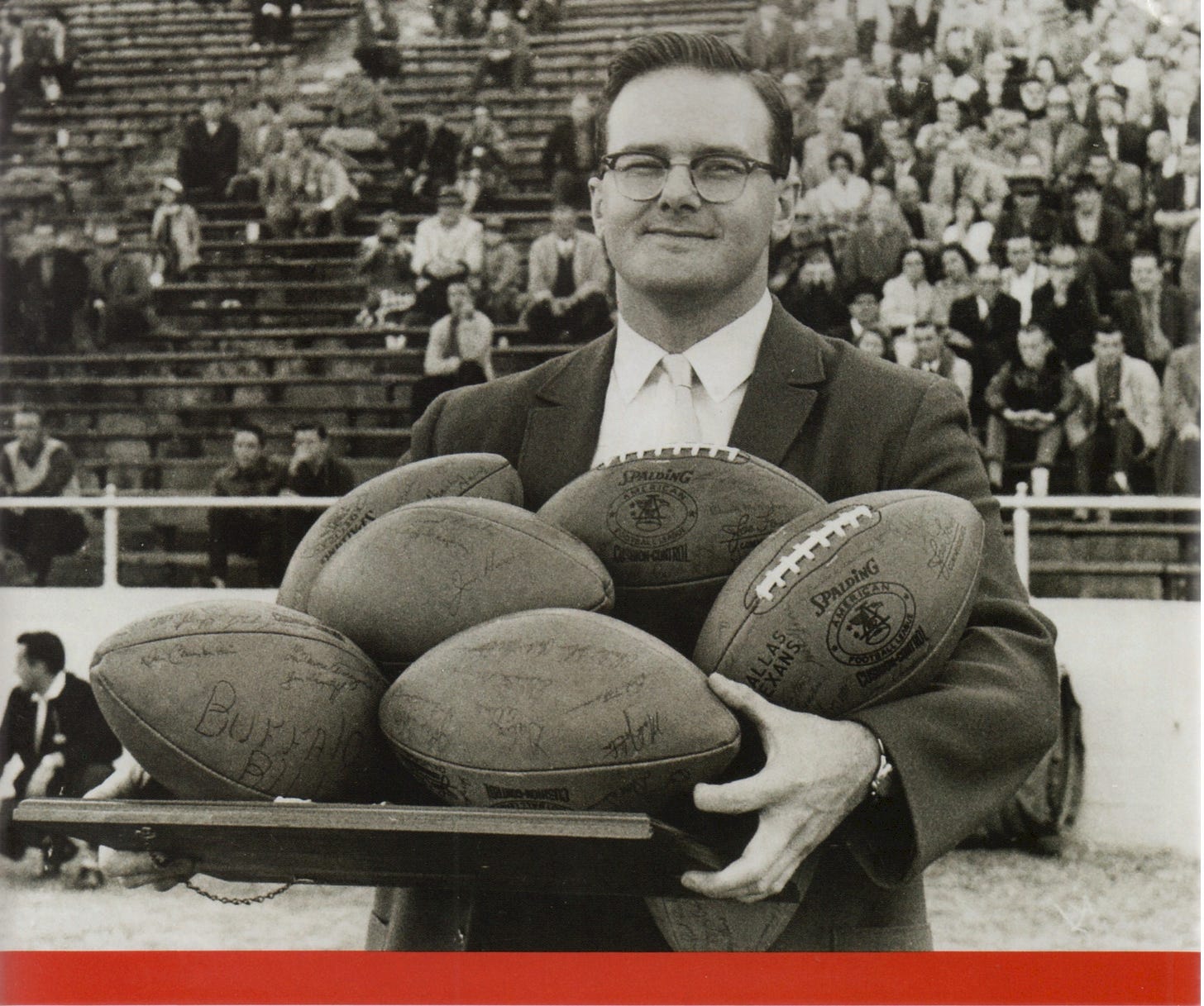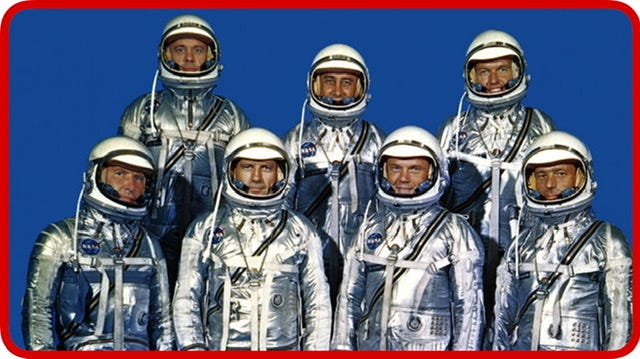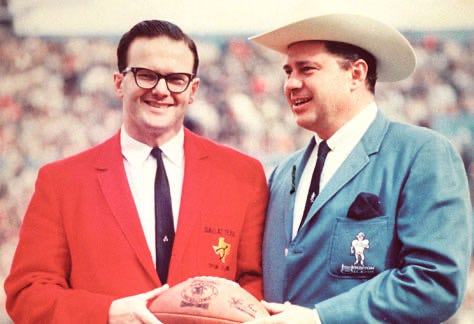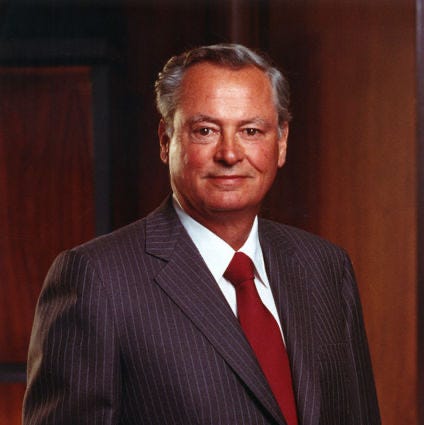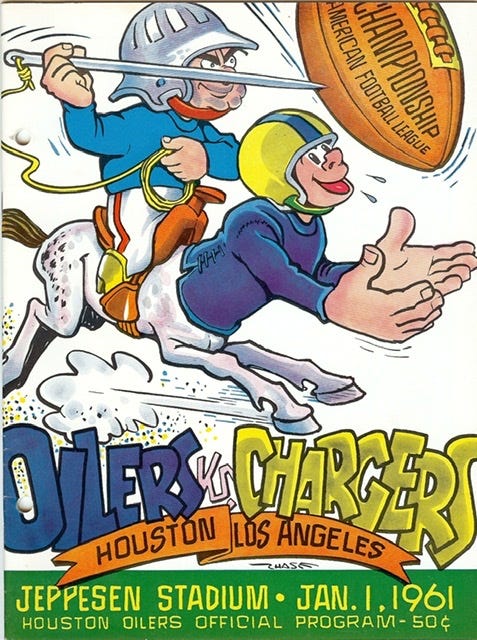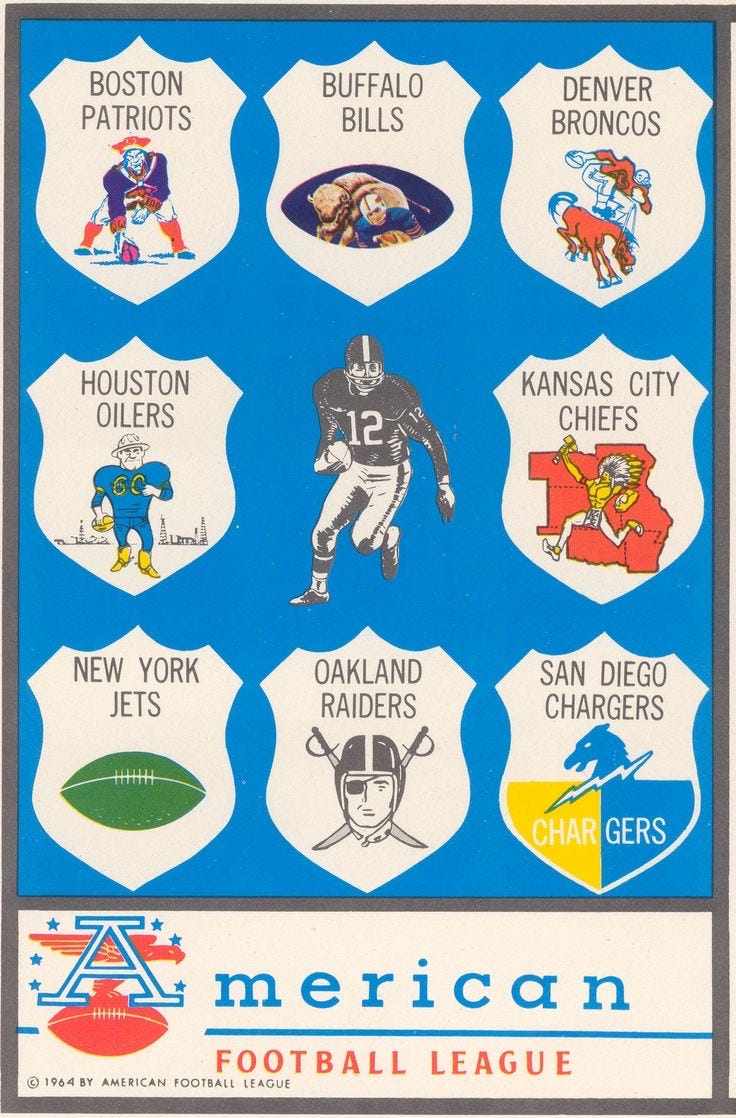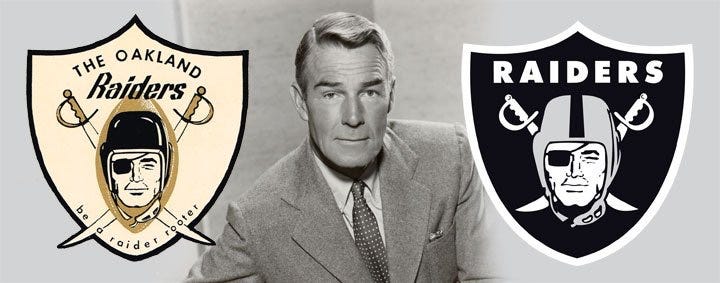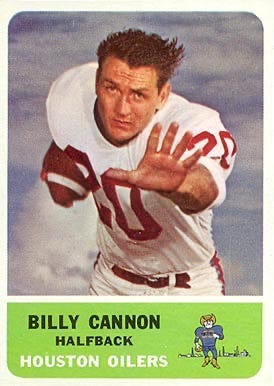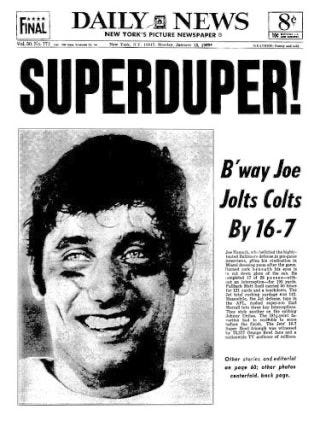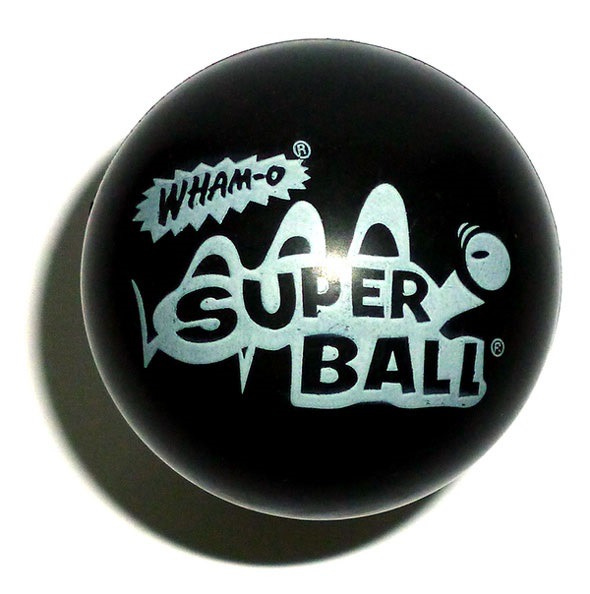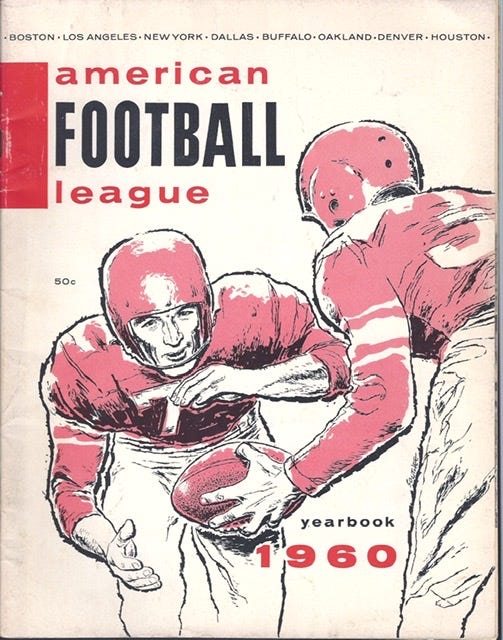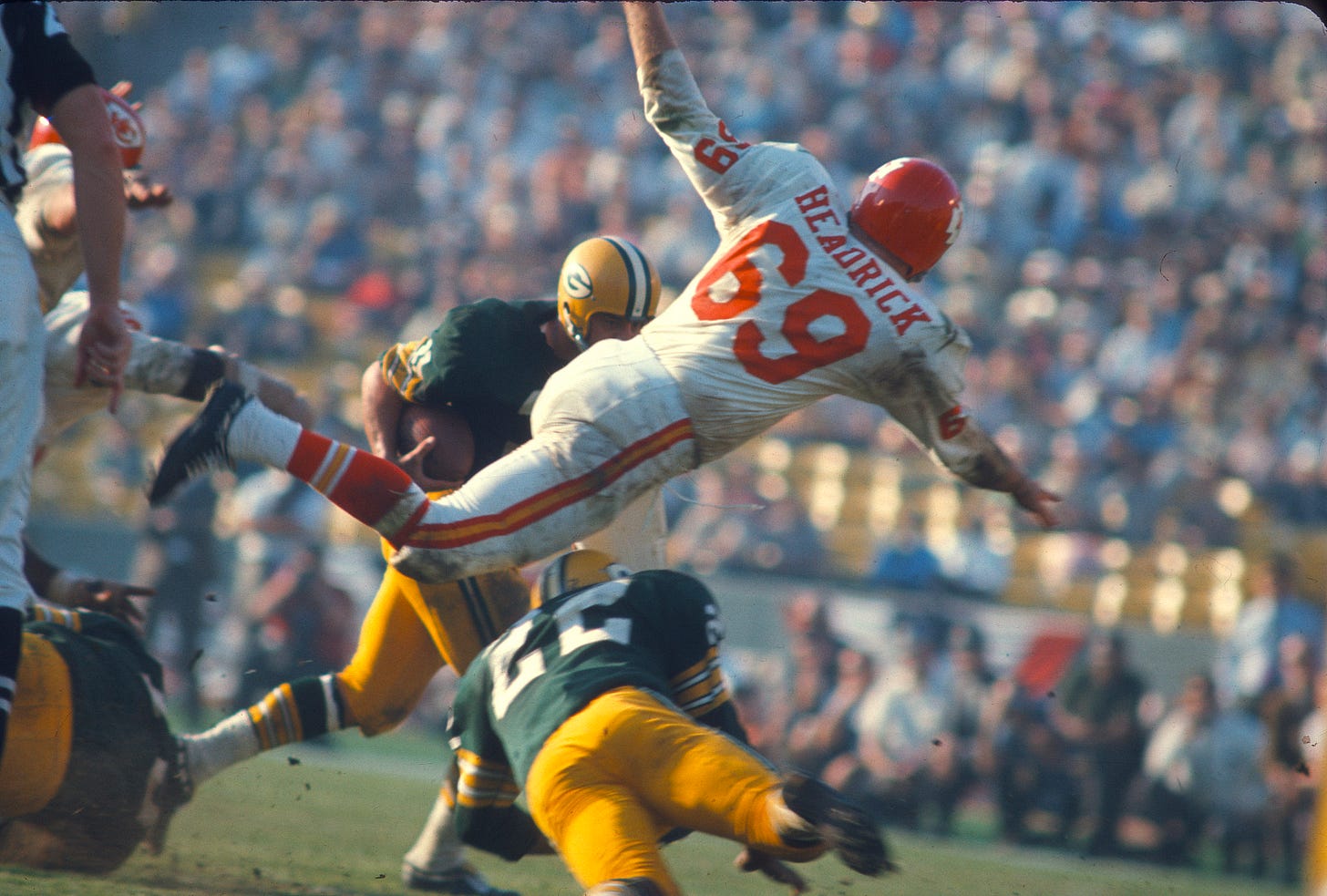
As the kickoff drew near for the first Big Game, which wasn’t even called the Super Bowl, many of the best minds in football wondered if this was such a good idea. What if the National Football League blew out the American Football League and the ragtag league was shown to be less than worthy? Worse, what if the AFL defeated the NFL? Would the real score show up on Wall Street the next day as a gigantic flop?
The championship without a name was as experimental as the league that made it a necessity. Think Moneyball and Mad Men meets Semi-Tough with just a touch of The Wolf of Wall Street.
The cool thing was that regardless of the outcome, the AFL had won big time. Soon the big game would get a trademarked name and become an institution, all thanks to a Texas businessman and visionary who would change professional football.
Enter Lamar Hunt, son of 70-year-old petroleum magnate H. L. Hunt, perhaps the richest man in America when his boy started hatching ideas on how to spend daddy’s money. H. L. Hunt was a confident wheeler dealer who relished the art of the gamble.
Lamar was all of 27 (two years older than Patrick Mahomes and sixteen years younger than Tom Brady) when he began shaking up the world of football and finance one Hail Mary at a time. “Popsie,” his affectionate term for his own personal Daddy Warbucks, was his biggest cheerleader.
Young Hunt, a former geology major at Southern Methodist University, applied to the NFL for an expansion team for his hometown of Dallas, Texas. The NFL, aware that football TV ratings already lagged behind baseball, feared their product might already be oversaturated and balked. Hunt got a decline on this idea, as well as his next, purchasing the football Chicago Cardinals and moving them to Big D. It also received a no thank you.
Two strikes and Lamar started creating a league of his own.
Hunt formed a kind of Dallas buyer’s club to welcome investors for something that did not yet exist. It was 1959, the year of possibilities. The year of Alaska, Hawaii, rocket fins on automobiles, and the Mercury Seven astronauts. America might not be sure where she was going, but everything and everybody was aiming for the stars.
To get his league up and playing before the 1960 season, it was time to talk fast and get a handful of other wannabe sports big shots to put a little skin in the game.
One of his first calls was to his friend, oilman Kenneth “Bud” Adams, Jr. Hunt told Adams about a team he envisioned called the Dallas Texans. Then he dangled the league idea, convincing Adams that an intra-Texas rivalry would be the cornerstone of a new league that would play alongside, but not with, the NFL. The ground floor might be covered with Astroturf. Enter the Houston Oilers.
Bob Howsam, CEO and guiding influence behind the minor league Denver Bears, was all baseball. In hopes of attracting an MLB expansion team, he added more seats to bring Bear’s Stadium to a capacity of 34,000. When the baseball didn’t bounce his way, Howsam found himself at the Brown Palace talking football with Lamar Hunt. The idea of the Denver Broncos took hold. John Elway would be born the following summer.
From Los Angeles came Barron Hilton, son of Conrad of the famed hotel chain. Barron’s family was and is fascinating. At one time or another he was the stepson of Zsa Zsa Gabor, the brother-in-law of Elizabeth Taylor, and grandfather of Paris Hilton.
An hour with Hunt and Barron was ready to sign up. He arranged a contest to name the new football team, first prize an all-expense paid vacation to Mexico. The fans chose “Los Angeles Chargers.” Hilton, always the entrepreneur, thought it would be a good fit for his current big business interest, Carte Blanche. Charge!
Henry Wismer was a broadcaster, originally calling Detroit Lions games before moving to the Washington Football Team where he was “voice of” on the radio and “25% owner” inside the front office. During Hunt’s hot summer of 1959, WIsmer became the new owner of the “Titans of New York,” who would play home games at the Polo Grounds.
The air miles were piling up for Lamar, resulting in two more teams issuing birth announcements. Former sports writer Billy Sullivan asked Boston for a name and the fans responded with “Patriots.” Further west, naming the Buffalo team to honor the wartime All American Football Conference Buffalo Bisons became a thing. The new league soon welcomed founder Ralph Wilson and the Buffalo Bills.
The grand unveiling came in August, 1959, and what the participants had been calling the “Foolish Club” made it official. Of the proposed eight teams, Hunt had six owners and six cities. Zero stadiums, zero schedules, zero players. No television contracts. Small details. The “American Football League” would kick off in 1960. They wouldn’t play the NFL, at least not at first, but they would go up against them for Sunday afternoon ratings.
The original plan called for a team from Minnesota. Before you could say Fran Tarkenton the original owners received an offer they couldn’t refuse. They jumped the new ship to sail with the established NFL as the Minnesota Vikings, an homage to 11th century Norse explorer Leif Erikson.
The first game had not been played and the original league had already lost a team. Hilton was threatening to unplug his Chargers if the replacement team was not located on the West Coast. Flying to all those road games could bust the budget. A group of Oakland elites including former U. S. Senator and Oakland Tribune owner William Fife and Kaiser Steel’s Edgar Kaiser formed a limited partnership that would be run by Chet Soda and a group of partners that included F. Wayne Valley. Al Davis arrived soon after.
The community naming idea was borrowed from Fife's paper. Sports fans chose the Oakland Señors. Rumors flew that Soda, fond of calling his business associates “señor,” had rigged the contest. The second place names were allegedly “Lakers” and “Mavericks.” Ten thousand voters cried foul, and the name that came in third, the Raiders, was chosen. A logo was drawn to look like actor Randolph Scott as a pirate in a football helmet.
The idea of starting an American Football League to compete against the NFL had been attempted in 1926, 1936, and 1940. In 1960 it would succeed. Finding owners and teams was one thing, putting teams on the field was something else, The same gusto and crazy that had started the league fueled the first drafts.
Presidential candidate John F, Kennedy garnered many headlines that year, but the sports pages were changing history also. The new AFL got their TV contract with ABC. Next the rookie league signed 75% of the NFL’s first round draft choices. Heading that class was Heisman winner Billy Cannon, picked #1 by the Los Angeles Rams, signed by the Houston Oilers.
Another early development of note. The New York Titans became the New York Jets. Hunt received a counter punch when the NFL expanded into Texas in 1960 with the Dallas Cowboys. After their third season, Hunt moved his Texans to Kansas City and renamed them the Chiefs.
The two leagues played separately from 1960-1965. The season would end with an NFL champion, an AFL champion, and a lot of fans wondering why there wasn’t just one more big game?
--------------------------------------------------------Imaginary Super Bowls that would have happened over those six seasons:
1960 Philadelphia Eagles vs Houston Oilers
1961 Green Bay Packers vs Houston Oilers
1962 Green Bay Packers vs Dallas Texans
1963 Chicago Bears vs San Diego Chargers
1964 Cleveland Browns vs Buffalo Bills
1965 Green Bay Packers vs Buffalo Bills
--------------------------------------------------------
The rival leagues merged following the 1965 season and culminated in the long anticipated “AFL-NFL World Championship Game.” Fittingly, Lamar Hunt’s AFL Kansas City Chiefs were pitted against the NFL Green Bay Packers.
So when do we get the Super Bowl name? Officially after the second championship, though tickets for what would be Super Bowl III still said World Championship. NFL commissioner Pete Rozelle had suggested the “Big One” as well as the “Pro Bowl,” which would get used for future all star games. Thankfully the Big One resides somewhere back in time with the New York Titans and the Oakland Señors.
One 60s afternoon, Lamar’s wife Norma Hunt shopped in a Dallas toy store. Here she discovered some incredible bouncy balls manufactured by WHAM-O, the company who originated Hula Hoops and Frisbees. Back home her husband asked what was this incredible super charged handball. Norma answered that it was a “Super Ball.” She could have said it was made of Zectron, a hard elastomer Polybutadiene alloy, but luckily she didn’t. So we don’t have the Zectron Bowl.
The light, in the form of a bouncing ball, clicked in Lamar Hunt’s head. Rozelle was cool to “Super Bowl” but had to admit it was better than the “Big One.” The name change came just in time for the first AFL win, in Super Bowl III when Joe Namath guaranteed his New York Jets would defeat the storied Baltimore Colts.
Years later, Rozelle wrote to Hunt telling him he thought that the Super Bowl was a great name. Super Balls, which bounced 92% as high as the previous bounce, sold 20 million in the 60s alone.
Lamar Hunt passed in 2006 at 74. The team is still owned by the family and is believed to be a $2.3 billion franchise.
The Super Bowl story continues Sunday, February 7, 2021, when the Tampa Bay Buccaneers host the first home team championship against Hunt’s Kansas City Chiefs. The league he created makes up half of the National Football League. The game that decides the champion is LV years old.
All football photographs courtesy of the National Football League and the Kansas City Chiefs. The photograph of the Mercury astronauts courtesy of NASA.
-----




